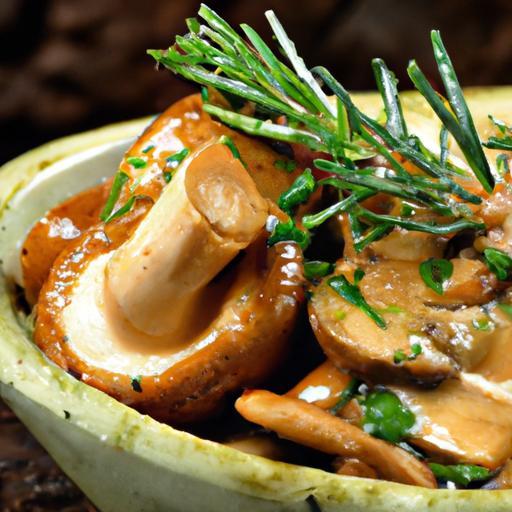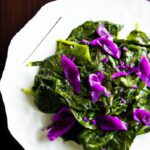Every year, as autumn leaves begin their slow descent, foragers and nature enthusiasts eagerly venture into forests and meadows, baskets in hand, in search of the humble mushroom. Yet this year, a curious silence has fallen over the usual mushroom hunting grounds. Where have the mushrooms gone? This unexpected scarcity has left many wondering about the delicate balance that governs fungal growth and what changes might be disrupting it. Join us as we delve into the mysterious disappearance of this season’s fungi, exploring environmental shifts, ecological impacts, and the intricate web of factors behind this year’s fungal silence.
Where have the mushrooms gone? This haunting question pulses through the hearts of foragers and culinary creators alike as this year’s silence in the woods grows louder. Mushroom seasons once bursting with vibrant fungi appear muted, influenced by unseen environmental forces that shape this delicate ecosystem. To craft a dish honoring the fleeting bounty, we must first understand the delicate dance between climate shifts, sustainable harvesting, and community efforts that paint the backdrop of our fungi’s story.
Prep and Cook Time
Preparation: 20 minutes
Cook Time: 25 minutes
Total Time: 45 minutes
Yield
4 hearty servings
Difficulty Level
Medium – Requires attention to detail and fresh foraged ingredients
Ingredients
- 300g mixed wild mushrooms (chanterelles, oyster, shiitake), cleaned
- 3 tbsp olive oil or unsalted butter
- 1 medium shallot, finely chopped
- 2 cloves garlic, minced
- 1/4 cup dry white wine (optional, adds depth)
- 1 tbsp fresh thyme, chopped
- 1/2 cup heavy cream
- Salt and freshly ground black pepper, to taste
- 1 tsp lemon zest for brightness
- Fresh parsley, chopped for garnish
- 4 slices rustic country bread, toasted (optional but recommended)
Instructions
- Heat the olive oil or butter in a large skillet over medium heat. Add the shallots and garlic, sautéing until translucent and aromatic – about 3 minutes.
- Introduce the mixed wild mushrooms to the pan, stirring gently. Sauté until golden brown and tender, about 7-8 minutes, stirring occasionally to prevent sticking and ensure even caramelization.
- Pour in the white wine, letting it simmer until almost completely evaporated, about 3 minutes, to concentrate the flavors.
- Sprinkle in the fresh thyme, salt, and pepper. Stir well to combine the earthy aromas that embody mushroom season’s magic.
- Lower the heat and gently stir in the heavy cream, allowing the sauce to thicken and beautifully coat each mushroom.
- Add the lemon zest to brighten the dish with a fresh, invigorating note. Adjust seasoning if needed.
- Remove from heat and let it rest for 2 minutes, then serve warm alongside toasted rustic bread.
Chef’s Notes & Tips for Success
- Foraging and Sustainability: When sourcing wild mushrooms, always prioritize sustainable foraging methods. Harvest responsibly by taking only what you need and leaving the mycelium undisturbed to ensure future growth.
- Substitutions: If wild mushrooms are scarce this season, substitute with cultivated varieties like cremini or button mushrooms for a similar texture.
- Make-ahead: Prepare the mushroom sauce up to 2 days in advance and gently reheat on low, stirring in a splash of broth or cream to restore silkiness.
- Climate caution: Keep in mind that variability in mushroom availability often correlates with seasonal weather; a dry or erratic climate can greatly limit yield.
Serving Suggestions
Serve your creamy wild mushroom sauté elegantly spread over toasted rustic country bread or as a decadent side to herb-roasted chicken. Garnish liberally with fresh parsley and a light drizzle of olive oil for extra gloss. Pair with a crisp white wine or earthy light-bodied red to echo the forest floor’s complexity and savor each bite as a celebration of nature’s fleeting gifts.
| Nutritional Info (per serving) | Calories | Protein | Carbs | Fat |
|---|---|---|---|---|
| Wild Mushroom Sauté | 220 kcal | 5g | 8g | 18g |

For further insight into the intricate relationship between fungi and weather patterns, explore National Geographic’s expert analysis on mushroom populations and climate change. Also, discover sustainable foraging guides in our Sustainable Food Sources series to deepen your connection with nature and your kitchen.
Q&A
Q&A: Where Have the Mushrooms Gone? Exploring This Year’s Silence
Q1: Why are the forests so eerily quiet this mushroom season?
A1: This year, the usual chorus of fungi has fallen silent, largely because of unusual weather patterns-think prolonged droughts, fluctuating temperatures, and a lack of the gentle rains mushrooms adore. These factors disrupt the delicate balance mushrooms need to fruit and thrive, leaving forest floors surprisingly bare.
Q2: Aren’t mushrooms supposed to pop up everywhere once the season begins?
A2: Traditionally, yes! Mushrooms flourish when moisture, temperature, and organic material align perfectly. But nature isn’t predictable. This year’s atypical climate made that perfect alignment elusive. Without ample moisture and stable conditions, mycelium-the mushroom’s underground network-holds back its fruiting, making surface appearances disappear.
Q3: Could environmental changes be to blame beyond just the weather?
A3: Absolutely. Deforestation, soil pollution, and shifts in ecosystems can all stress fungal populations. Furthermore, fungi rely on symbiotic relationships with plants and trees. If these partners struggle or alter their behavior due to environmental stress, mushrooms might retreat, unable to maintain their usual cycles.
Q4: What impact does the absence of mushrooms have on the ecosystem?
A4: Mushrooms are ecological superheroes! They decompose organic matter, recycle nutrients, and form symbiotic bonds with plants, supporting forest health. Their disappearance interferes with these processes, potentially disrupting nutrient cycles and affecting species that rely on fungi for food or habitat.
Q5: Is this silence a temporary glitch or a sign of a bigger problem?
A5: While a dry year can cause a temporary mushroom hiatus, consistent absence over multiple seasons might signal deeper environmental issues. Scientists are closely monitoring fungal populations to understand if this silence foreshadows more chronic changes in forest health or climate impacts.
Q6: Can anything be done to help the mushrooms come back?
A6: Supporting healthy ecosystems benefits mushrooms immensely. Conservation efforts-like protecting forest habitats, reducing pollution, and promoting biodiversity-create favorable conditions for fungi. Even citizen scientists and mushroom enthusiasts can assist by monitoring local fungi and reporting observations to researchers.
Q7: How can curious nature lovers stay hopeful and engaged amid this silence?
A7: Embrace the mystery! The quiet forests invite us to listen, observe, and learn more deeply about the subtle fungal world beneath our feet. Engaging with mycology groups, reading about fungal ecology, and visiting forests during different seasons can enrich understanding and appreciation-even when mushrooms stay hidden.
Q8: When might the mushrooms return to their usual abundance?
A8: With favorable weather conditions-consistent rainfall, balanced temperatures, and healthy habitats-mushrooms can stage a triumphant comeback, sometimes appearing in surprising bursts. Nature’s resilience ensures that, while silent this year, the fungal network remains poised to reawaken when conditions align once more.
This year’s mushroom silence is a quiet story of nature’s sensitivity, reminding us how intertwined weather, environment, and life cycles truly are. As we wait for the forest floor to bloom again, our curiosity and care grow stronger in kind.
In Retrospect
As the forest floor remains eerily quiet this year, the missing mushrooms leave us with more questions than answers. Their silence is a subtle but profound reminder of the delicate balance in ecosystems-one easily tipped by changes in climate, soil health, and human impact. While we await the return of their silent symphony, this unusual absence offers a unique opportunity to reflect on how interconnected our natural world truly is. Watching, learning, and adapting, we can hope to nurture the conditions that bring not only mushrooms back but also the vibrant life they support beneath our feet. In this quiet season, the mushrooms’ hush speaks volumes-if only we listen.


